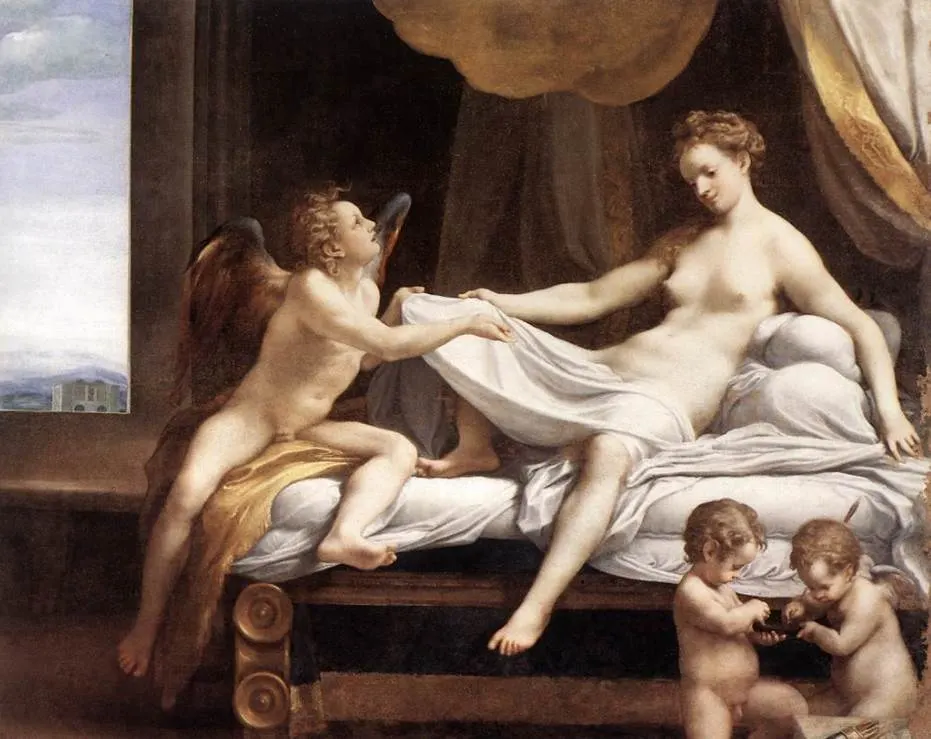When a man named Cardinal Scipione Borghese (1577-1633) started collecting fine works of art to decorate his “Villa Borghese,” he most probably didn’t have an idea that his opulent residence would become one of the most popular museums in Rome called the “Galleria Borghese” today.
He was the secretary of Pope Paul V, a function that allowed him to amass a great amount of wealth. He used this wealth to buy sculptures and paintings from the most famous artists in history and became an important patron of the young Gian Lorenzo Bernini (1598-1680), one of the greatest Baroque artists in history.
Today, his initial collection has grown to a museum covering 20 rooms on 2 floors and features a wide variety of classical and neo-classical sculptures, as well as an impressive collection of Renaissance paintings.
Let’s take a closer look at some of the artworks at the Galleria Borghese that you shouldn’t miss during your visit.
1. David – Gian Lorenzo Bernini
- Date created: 1623-1624
- Dimensions: 170 centimeters (67 inches)
David is one of the ultimate masterpieces of Bernini, an artist who fell in favor of the rich Cardinal in the early 17th century. It’s not to be confused with the Statue of David by Michelangelo (1475-1564) or the Statue of David by Donatello, both created much earlier and completely different in style.
Although the sculpture depicts the same biblical hero as the other sculptures of David, the sense of motion of David actually throwing the stone at Goliath was quite revolutionary. While the other statues depict David either just before this action or after the giant had been killed, Bernini sculpted a snapshot of this intense moment.
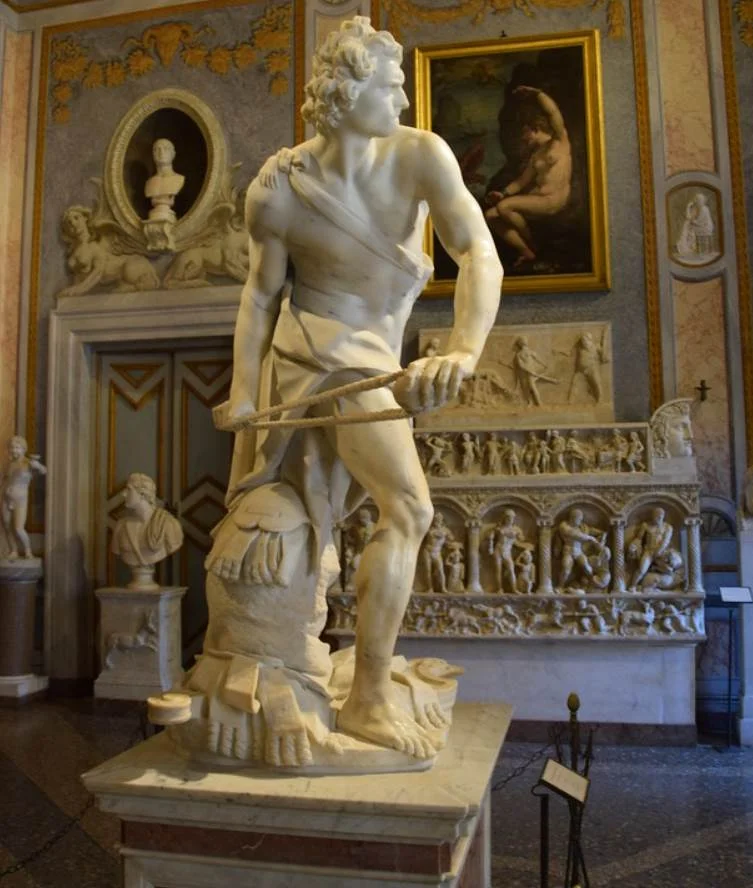
2. The Deposition – Raphael
- Date created: 1507
- Dimensions: 184 × 176 centimeters (72 × 69 inches)
The Deposition is one of the most remarkable paintings by Raphael for a number of reasons. Although it depicts the moment that Jesus Christ is about to put into his tomb following his crucifixion, it was commissioned to commemorate the son of an aristocrat in Perugia.
It was painted at the height of the career of Rafaello Sanzio da Urbina (1482-1520) which pretty much marked the height of the High Renaissance as well. This is the central part of a larger altarpiece and is one of the most fascinating artworks at the Galleria Borghese.

3. Apollo and Daphne – Gian Lorenzo Bernini
- Date created: 1622-1625
- Dimensions: 243 centimeters (96 inches)
Apollo and Daphne was the final sculpture that Gian Lorenzo Bernini created for Cardinal Scipione Borghese. It depicts the final part of a tour with the same name derived from Ovid’s Metamorphoses, an extensive poem written by the Roman poet in the early 1st century A.D.

It was sculpted around the same time as Bernini’s David and it’s assumed that the artist paused this work to complete David first. The sculpture was created in such as way that it can be viewed from multiple angles. This is the main reason why it was moved into the middle of the room.
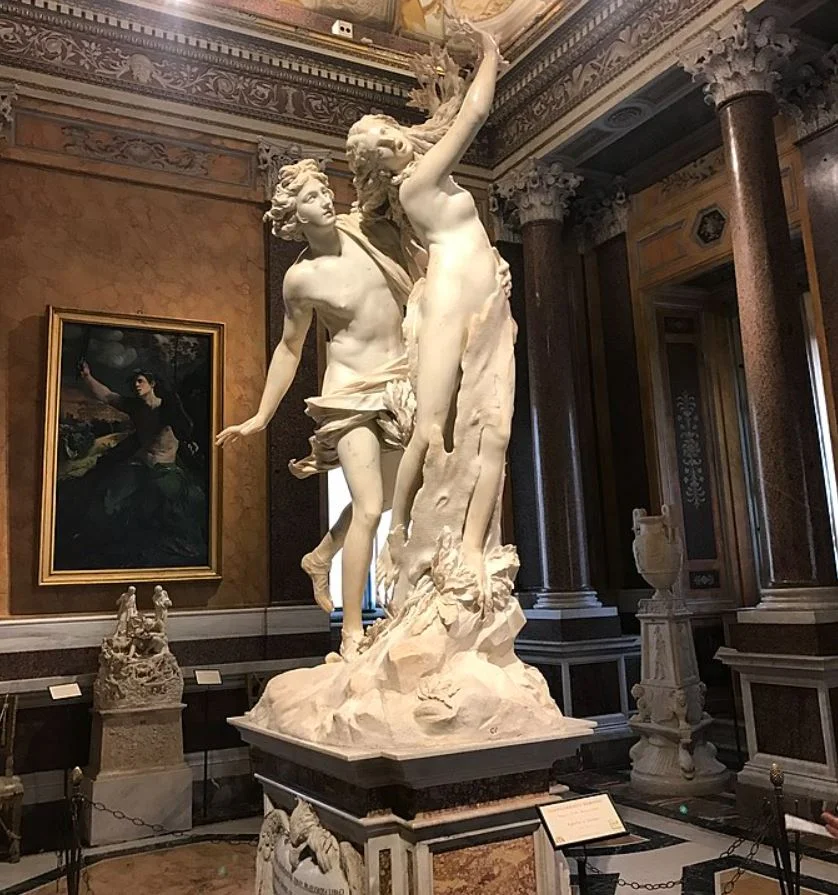
4. Sacred and Profane Love – Titian
- Date created: 1514
- Dimensions: 118 × 279 centimeters (46 × 110 inches)
Sacred and Profane Love was painted in the early phase of the extensive career of Tiziano Vecelli (1490-1576), a Renaissance artist who left behind an incredible oeuvre of masterpieces in a career that would last 6 more decades.
The exact details about this painting remain unknown but it’s assumed that it was commissioned by a member of the governing body of Venice to commemorate his marriage to a young woman. In this regard, the woman on the love could represent the bride while the one on the right represents Venus, the Roman goddess of love.
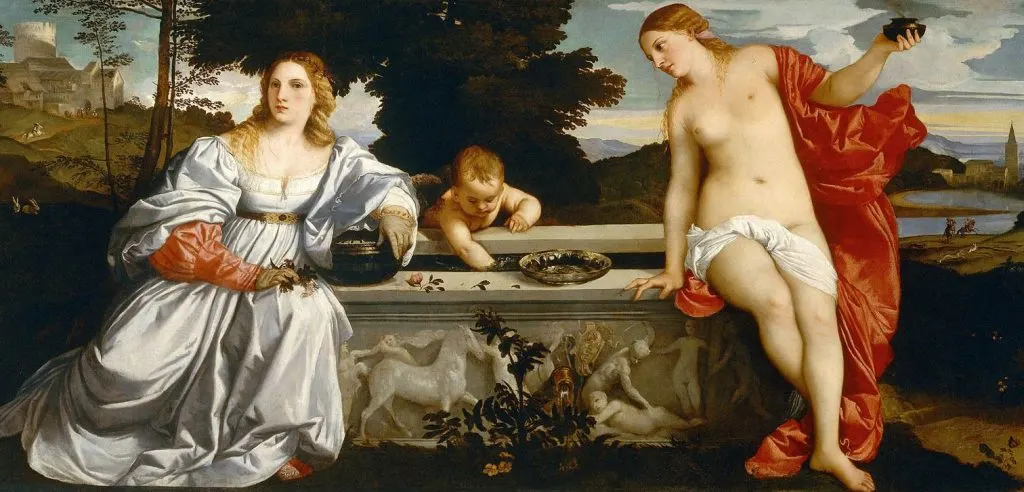
5. Venus Victrix – Antonio Canova
- Date created: 1805-1808
- Dimensions: 160 x 192 centimeters (63 x 75 inches)
Venus Victrix is also known as “Pauline Bonaparte as Venus Victrix” and is a sculpture by Canova that depicts the sister of French Emperor Napoleon Bonaparte. Pauline Bonaparte was depicted as the goddess Venus as she is seen reclining on a couch.
Antonio Canova (1757-1822) was the leading Neoclassical artist at the time and revived an ancient tradition in which living people were depicted as gods or goddesses. It wasn’t Pauline who commissioned it to glorify herself but her husband Camillo Borghese.
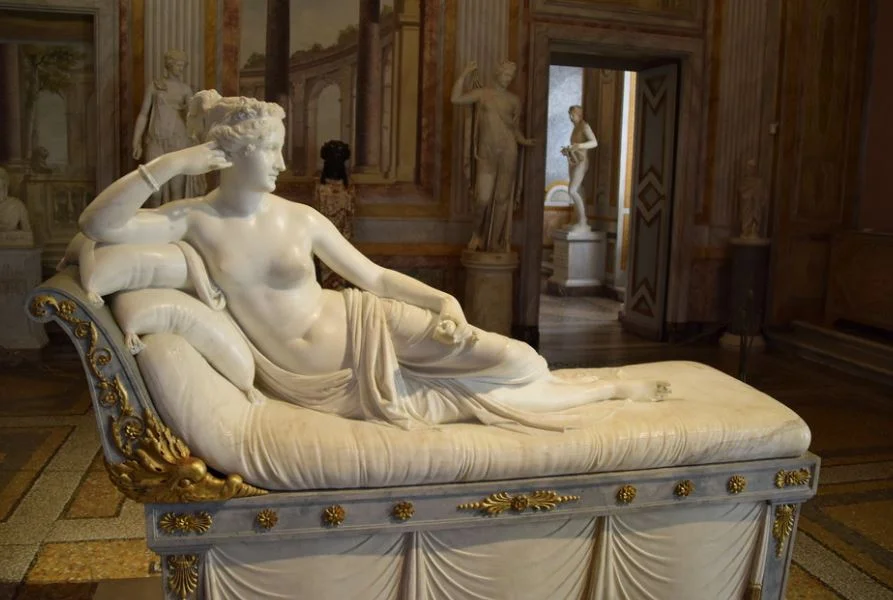
6. Young Sick Bacchus – Caravaggio
- Date created: 1593
- Dimensions: 67 × 53 centimeters (26 × 21 inches)
Young Sick Bacchus is one of the early paintings by Caravaggio and a self-portrait of the troubled artist. It depicts Michelangelo Merisi da Caravaggio (1571-1610) shortly after he arrived in Rome and during a period in which his health wasn’t that great.
The yellow appearance of the artist has been linked to several medical conditions, including malaria. This is one of the most remarkable artworks at the Galleria Borghese because it was painted at a time that Caravaggio was still struggling to earn commissions.
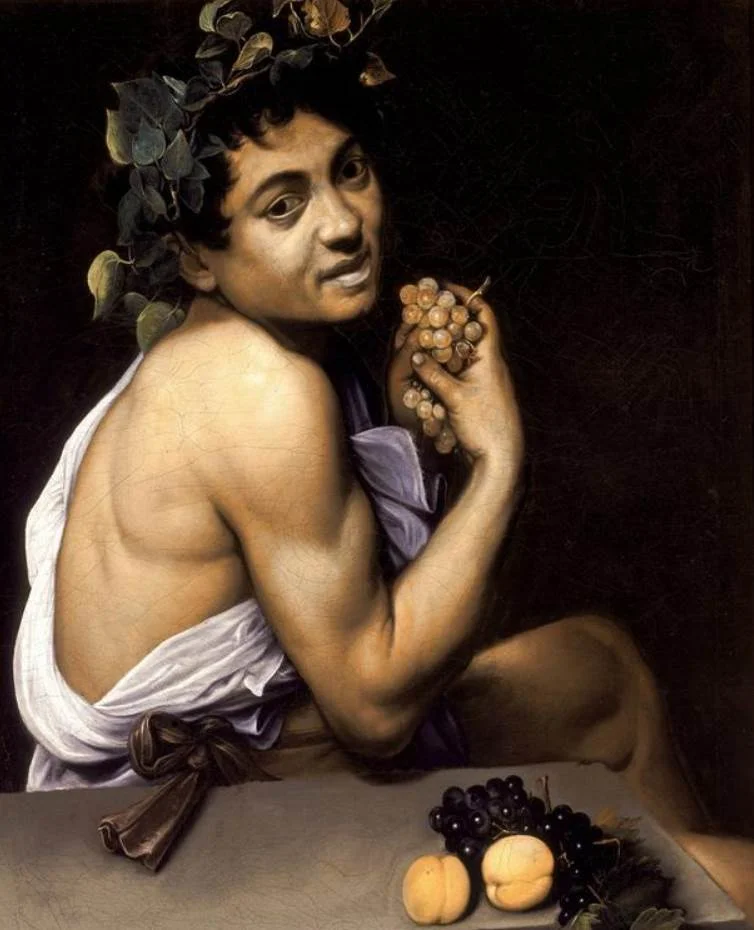
7. The Concert – Gerrit van Honthorst
- Date created: 1626-1630
- Dimensions: 168 x 202 centimeters (66.14 x 79.52 inches)
The Concert was painted by the Dutch Golden Age painter and one of the most renowned Dutch artists in history, Gerrit van Honthorst. This painting at the Galleria Borghese is not the original version of the work as this one is part of the collection of the National Gallery of Art in Washington D.C.
Regardless, this is one of the ultimate masterpieces of the artist and clearly shows the influence of the style of Caravaggio during his later years. The dramatic use of light and shadow was a distinctive trait of the Italian artist and it was brought to the Low Countries by artists like van Honthorst who traveled to Italy in the early 17th century.
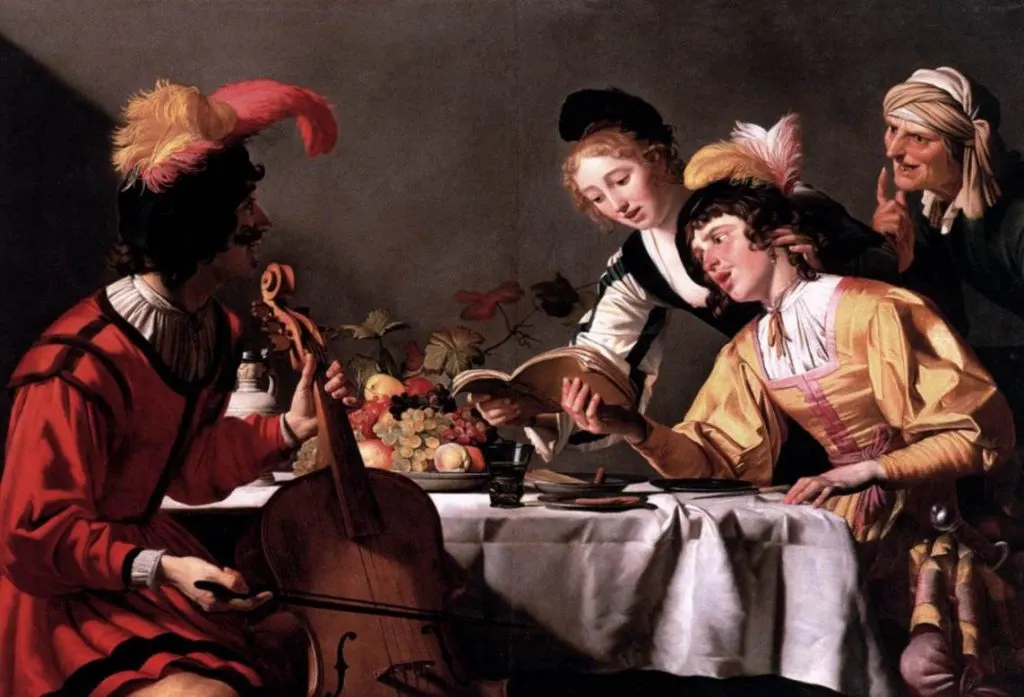
8. Susanna and the Elders – Peter Paul Rubens
- Date created: 1607
- Dimensions: 94 × 66 centimeters (37 × 26 inches)
Susanna and the Elders is one of the paintings by Rubens that was produced during the extended stay of the artist in Italy in the early 17th century. It’s the earlier of multiple versions that Peter Paul Rubens (1577-1640) painted of this popular theme in the world of art.
It depicts the story of Susanna which is mentioned in the Book of Daniel. She is bathing and can be seen being spied on by two elderly men who clearly lust for her. The story ends with the two old men being put to death after they falsely accuse Susanna of adultery.
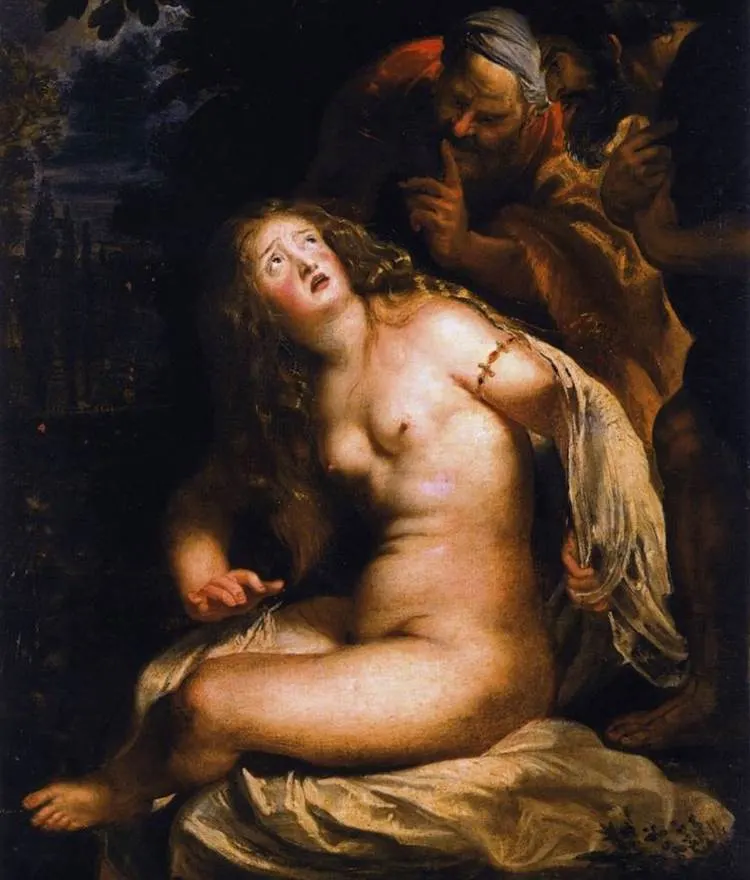
9. Saint Jerome Writing – Caravaggio
- Date created: 1605-1606
- Dimensions: 112 × 157 centimeters (44 × 62 inches)
Saint Jerome Writing or “Saint Jerome in his Study” is one of the masterpieces of Caravaggio produced after he became a superstar in the early 17th century. It’s fair to conclude that this particular painting defines the remarkable style of the artist who influenced so many generations after him.
Saint Jerome was a popular figure in the world of art and it seems as if Caravaggio was fond of depicting the man who is considered to be a “Doctor of the Church” in Roman Catholicism. The artist created several other works depicting Saint Jerome, including “Saint Jerome in Meditation” (1605) and another work titled “Saint Jerome Writing.” (1608).
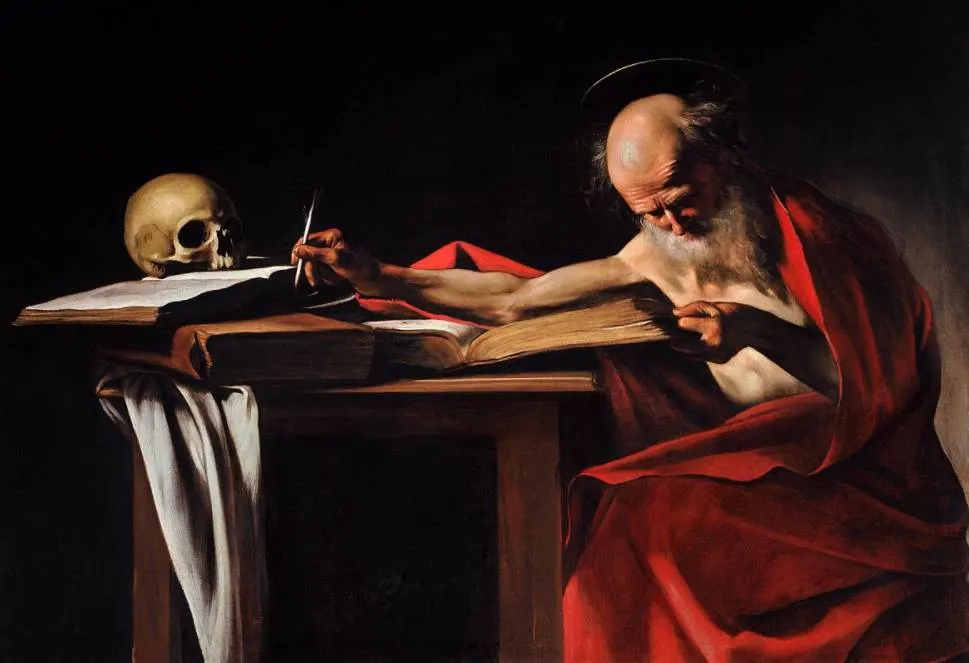
10. Danaë – Correggio
- Date created: 1531
- Dimensions: 161 × 193 centimeters (63 × 76 inches)
Danaë is one of the most famous works by Correggio (1489-1534), a Mannerist artist who transformed the Renaissance style and paved the way for the emerging of new artistic styles such as Mannerism in the second half of the 16th century and even Baroque and Rococo in the 17th and 18th centuries.
The painting depicts Danaë, the daughter of Acrisius, king of Argos in Greek Mythology. It depicts the moment that Danaë is being saved from a bronze tower after she was jailed by her own father. The gold rain above her represents Jupiter who becomes her savior.
